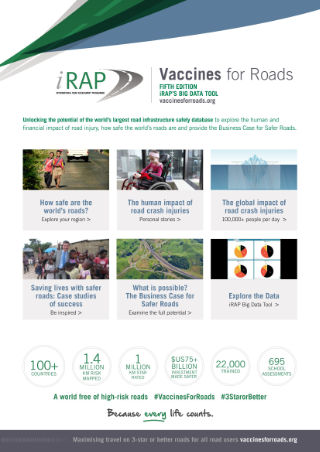Road accidents inflicts high economic costs. This ratio considers economic costs of road accidents with GDP (SEC-SEG-001).
Road accidents inflicts high economic costs. This indicator reports economic costs of road accident injuries in USD.
Development of Model Intelligent Transport Systems Deployments for the Asian Highway Network
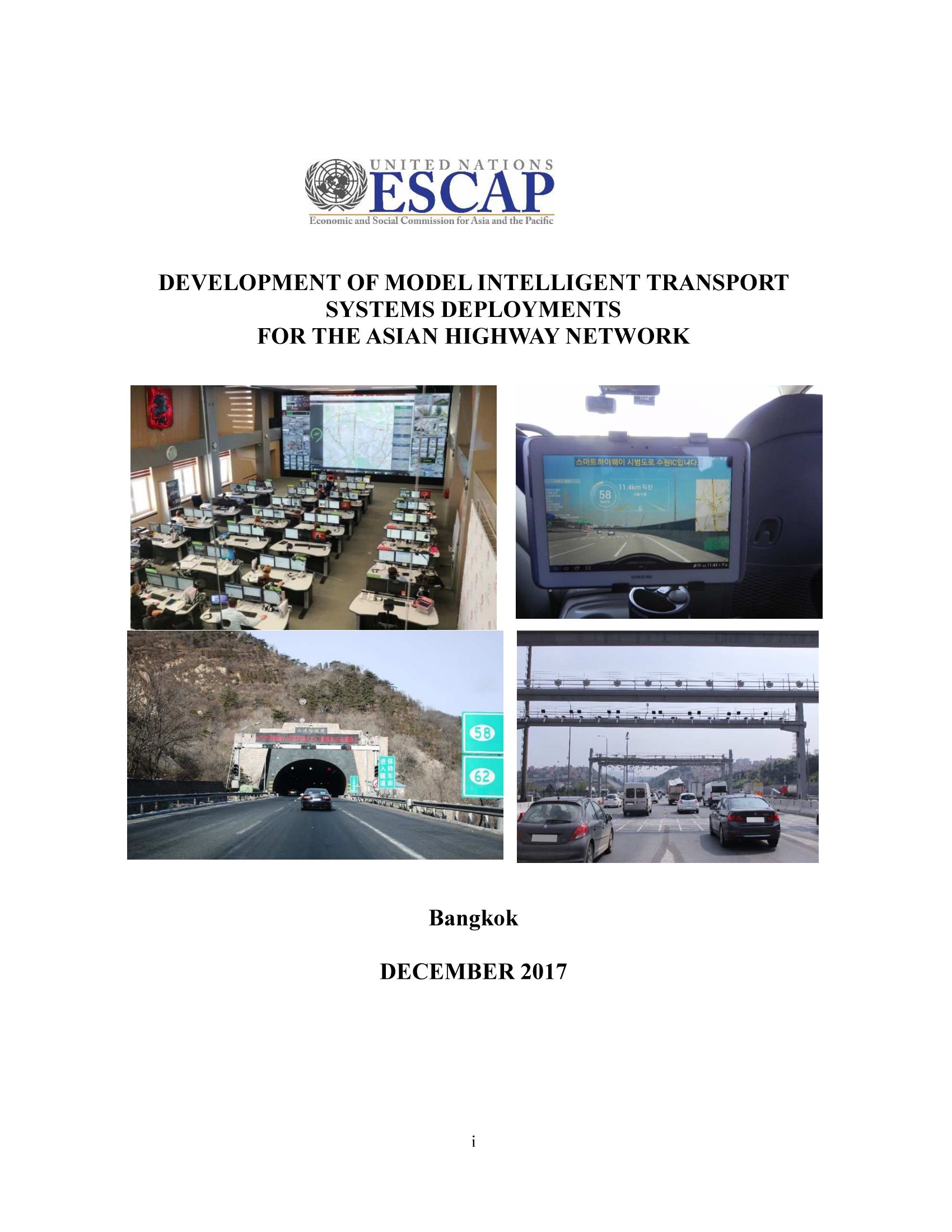
Intelligent transport systems (ITS) is a set of transport infrastructure and operation systems that maximize safety, efficiency and convenience of the road system by using advanced information technologies while minimizing costly large-scale road construction. While there is currently no single internationally agreed definition for ITS, it is generally understood to be the combination of technologies, most of which involve information and communications technology (ICT) as a platform, that are embedded within conventional transport infrastructure. These systems are a combination of technologies based on the new capabilities offered by modern ICT systems.
As one of the initiatives towards sustainable transport connectivity in Asia and the Pacific, the ESCAP secretariat, in association with the Korea Expressway Corporation conducted a study on the development of model ITS deployments for the Asian Highway network during 2015-2017. Under the study, the secretariat collected information on deployment of intelligent transport systems in China, Republic of Korea, Russian Federation and Turkey. In January 2016, with a view to assessing ITS deployments in the Asia-Pacific region, the secretariat conducted a survey to gather information about the status and practices of ITS deployments in Asian Highway member countries. Responses from 21 member countries indicated that the deployment status of ITS services varied extensively across the region.
Road Safety is a sustainable development challenge for the member countries of the Economic and Social Commission for Asia and the Pacific (ESCAP). In 2016, approximately 1.35 million people were killed in road crashes globally. The economic and social consequences of this are enormous. In recent years, road safety has been receiving greater attention from the international community, and in 2010, the General Assembly proclaimed the period from 2011 to 2020 as the Decade of Action for Road Safety. The global commitment to road safety was further strengthened by the General Assembly through the adoption of resolution 70/1 on 25 September 2015 of the 2030 Agenda for Sustainable Development, as reflected in targets 3.6 (by 2020 halve the number of global deaths by road accidents) and 11.2 (by 2030, provide access to safe, affordable, accessible and sustainable transport systems for all, improving road safety, notably by expanding public transport, with special attention to the needs of those in vulnerable situations, women, children, persons with disabilities and older persons) of the accompanying Sustainable Development Goals.
Road safety has been a major concern in Asia and the Pacific, as 60 per cent of global road deaths in 2016 occurred in the region. In line with the trend globally, road safety has received greater attention from high- level policymakers among ESCAP member countries. At the Ministerial Conference on Transport, at its third session, held in Moscow from 5 to 9 December 2016, the Asia-Pacific transport ministers renewed their commitments towards improving road safety by adopting the Ministerial Declaration on Sustainable Transport Connectivity in Asia and the Pacific, which was endorsed by the Commission in it its resolution 73/4 of 19 May 2017. Under this resolution, members and associate members of ESCAP have been encouraged in meeting their commitments under the Decade of Action for Road Safety (2011-2020) and 2030 Agenda for Sustainable Development.
Notably, road traffic deaths in the ESCAP region declined from 777,016 in 2010 to 733,541 in 2013, and then increased to 812,172 in 2016. The South and South-West Asia subregion accounted for 48.13 per cent of the road deaths.
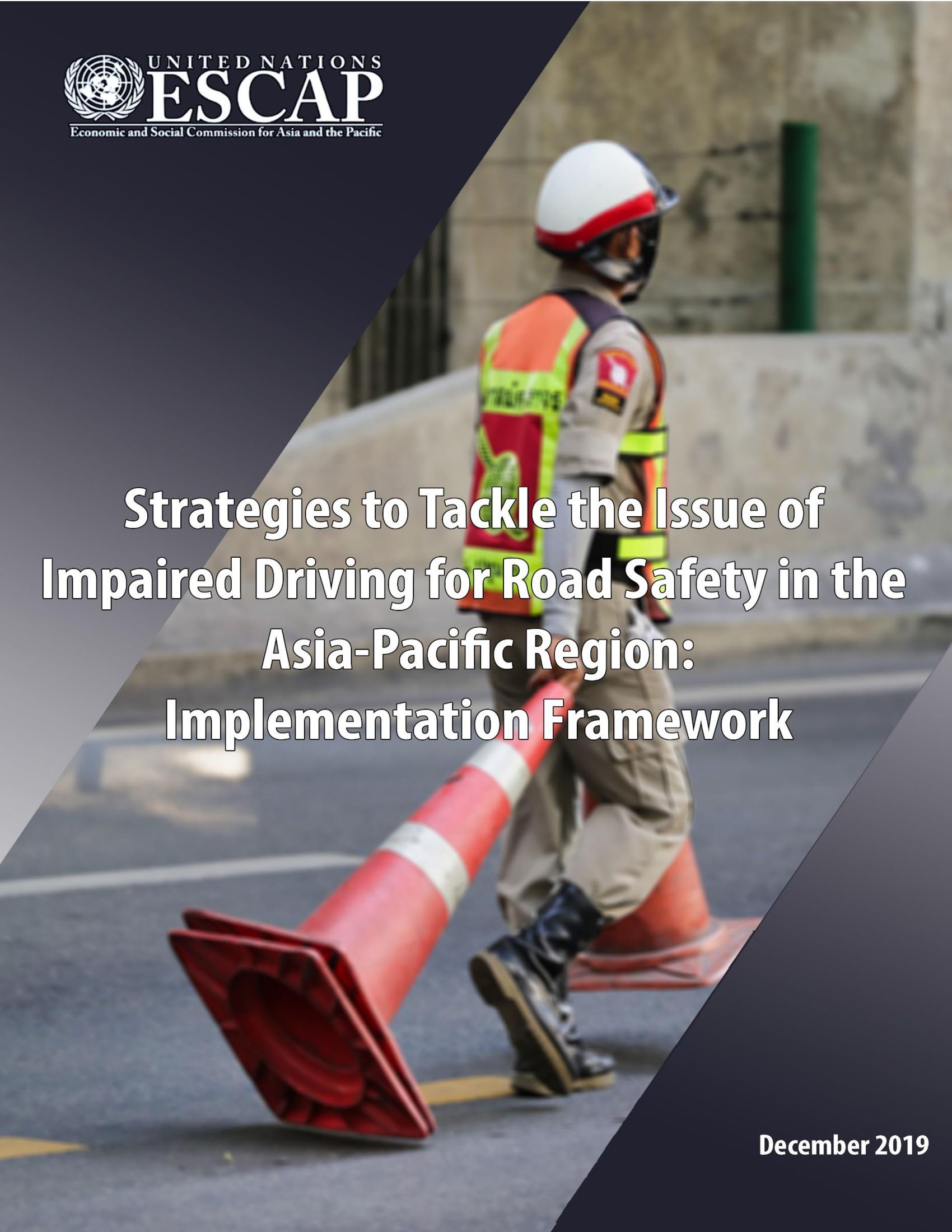
Development of Strategies to Promote and Facilitate the Implementation of the Asian Highway Design Standards
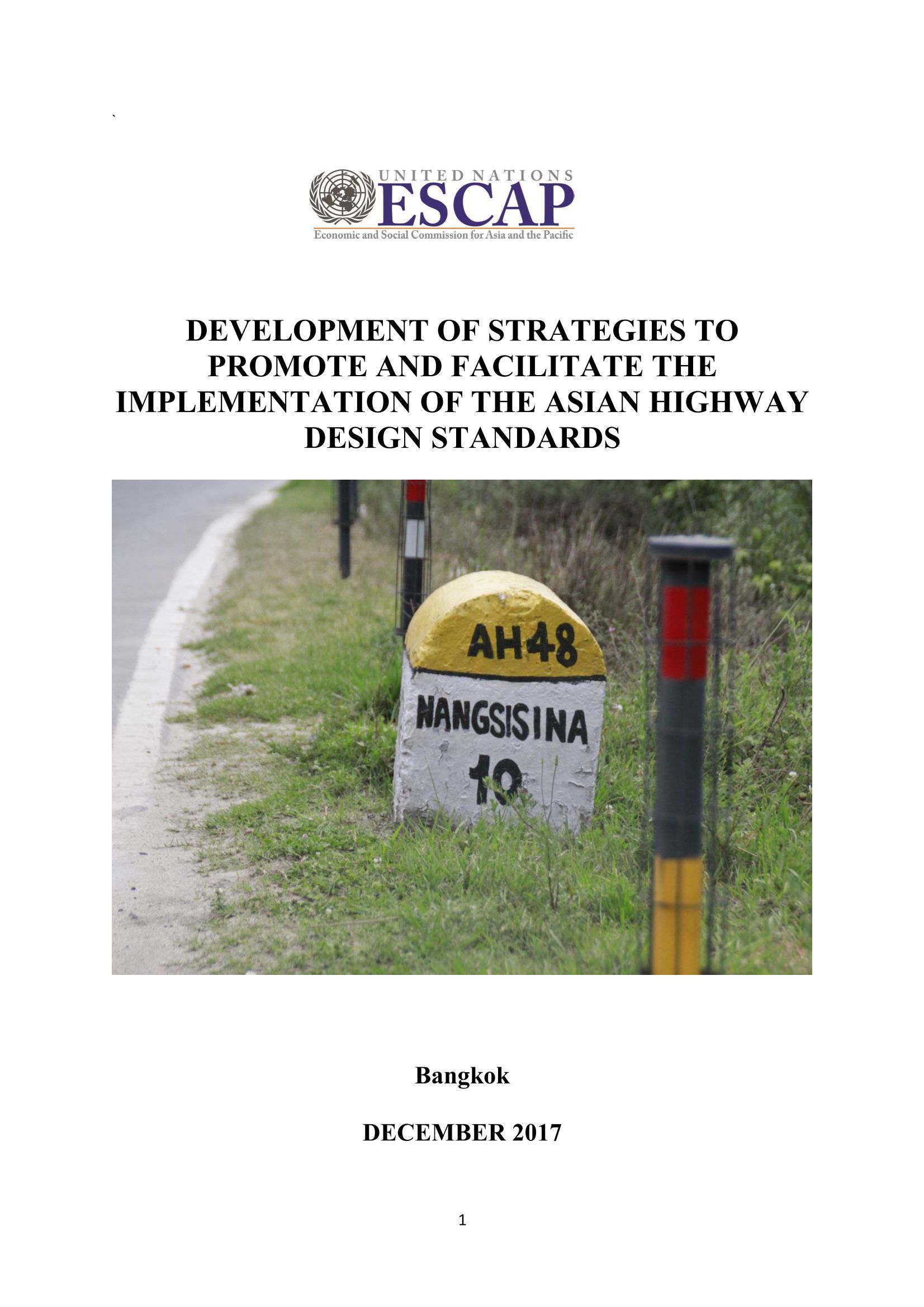
The Asian Highway Network is a coordinated plan for the development of highway routes of international importance with a view towards promoting and developing international road transport in the region. Since the Asian Highway network was adopted in 2003, it has already played a pivotal role in assisting member countries in improving intercountry and interregional transport links.
The Asian Highway classification and design standards provide the minimum standards and guidelines for the construction, improvement and maintenance of Asian Highway routes. According to the Intergovernmental Agreement on the Asian Highway network, Parties shall make every possible effort to implement the design standards. However, the quality of the Asian Highway network across member countries is uneven. The latest 2017 updates show that to date about 9,176 km, i.e.7.25 per cent, of the network do not yet meet the minimum desirable standards. An ESCAP estimation shows that upgrading different classes of the Asian Highway network to higher quality standards needs a considerable amount of investment estimated at US$ 51.4 billion in 2017.
A survey was conducted by the ESCAP secretariat to study status of implementation of the Asian Highway design standards in the member countries in June 2017. The survey results indicated that member countries encounter several challenges to implement the Asian Highway design standards. Lack of funding is the most critical challenge. Lack of awareness as well as lack of planning and coordination also hinder the development of the routes as well as implementation of the Asian Highway design standards.
Asian Highway Design Standard for Road Safety: Design Guidelines
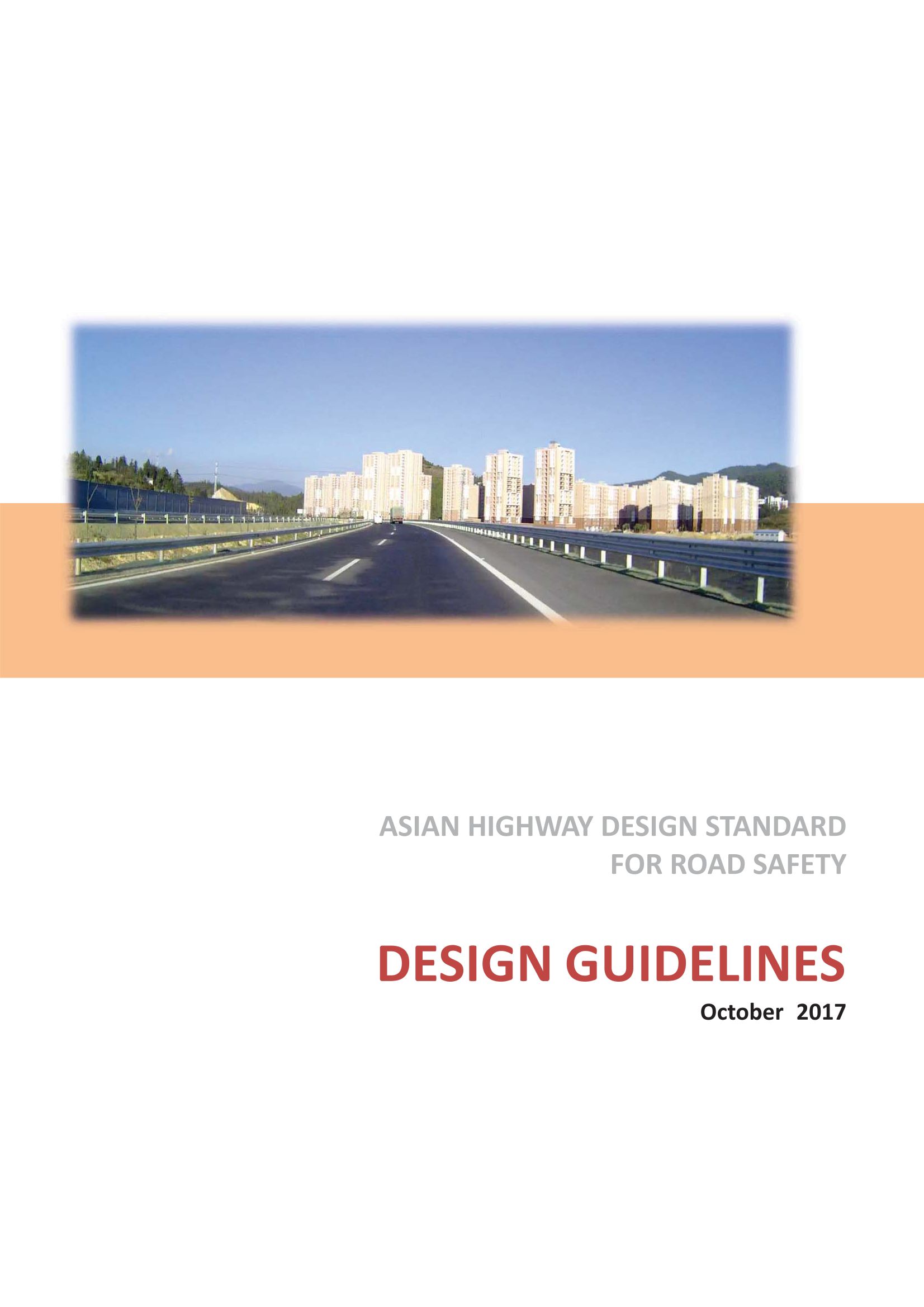
This document consists of recommended guidelines related to the “Asian Highway Design Standard for Road Safety” to the Intergovernmental Agreement on the Asian Highway Network.
While the guidelines are not mandatory in nature, the member countries of the Asian Highway network are encouraged to refer to the principles and recommendations given in the document for new road projects and improvements of existing sections of Asian Highway routes under their jurisdiction.
Due to the diverse circumstances of the Asian Highway Network, the adoption of particular recommendations would need to take into account prevailing social, economic and technical considerations.
In all cases, sound engineering skills are required to formulate specific solutions to address project issues which could be complex in reality. Flexibility and innovations are desirable as far as safety performance is not undermined and consistency is reasonably maintained.
This document does not necessarily reflect the view of the United Nations Economic and Social Commission for Asia and the Pacific (UNESCAP).
Development of Road Infrastructure Safety Facility Standards for the Asian Highway Network
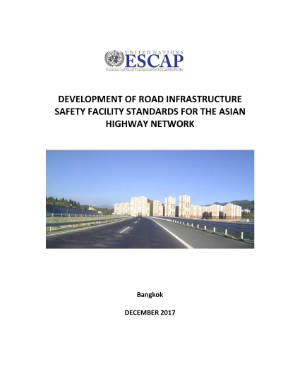
Road safety is a sustainable development issue that needs greater attention as road traffic fatalities and injuries place a significant burden on national economies. The Asia-Pacific region accounted for 58% of the global road traffic deaths in 2013. Between 2010 and 2013, while 16 Asian Highway member countries were successful in reducing road fatalities, others failed to do so. The seventh Goal of the “updated Regional Road Safety Goals and Targets for Asia and the Pacific, 2016-2020” emphasizes on developing the Asian Highway network as a model of road safety.
Studies show a strong correlation between infrastructure design and road safety and road engineering and design can influence the severity of the crashes. In this regard, the Annex II to the Intergovernmental Agreement on the Asian Highway Network which entered in to force on 4 July 2005 includes design standards for the Asian Highway Network. However, the design standard does not provide adequate guidance on road infrastructure safety facilities.
As one of the initiatives to address the road safety problem on the Asian Highway Network, the ESCAP secretariat, in association with the Korea Expressway Corporation conducted a study on the development of technical standards on road infrastructure safety facilities for the Asian Highway Network. A detailed literature review on existing standards for infrastructure element design and specification to address road safety in the Asian Highway member countries and other international sources was conducted. A list of 36 road infrastructure safety facilities was prepared. Detailed information on road infrastructure safety practices was collected from five participating countries. A survey was conducted to assess the prevalence, types and design standards of road safety facilities in the Asian Highway member countries in end 2015. The international road assessment programme (iRAP) methodology was used to illustrate how relative risk levels would change if road infrastructure safety facilities were added to the existing Asian Highway standard. It could be concluded that there is potential to promote the use of a broader range of road infrastructure safety facilities for the Asian Highway Network.
The study suggested that the Intergovernmental Agreement on the Asian Highway Network provides an adequate institutional platform for providing guidance to member countries in a number of areas and could further be used for promoting a coordinated approach to the development and adoption of standards of road infrastructure safety facilities. The study emphasizes on providing guidance to the Asian Highway member countries through a dedicated new annex to the Intergovernmental Agreement on the Asian Highway Network. In this regard, proposed mandatory minimum design standards of road infrastructure safety facilities for the Asian Highway Network which could serve as a draft Annex II bis “Asian Highway Design Standards for Road safety” to the Intergovernmental Agreement on the Asian Highway Network; and related design guidelines of road infrastructure safety facilities which could serve as a recommended practice for the Asian Highway Network have been developed. The study recommended the Asian Highway member countries to consider adopting and implementing technical design standards of road infrastructure safety facilities towards improving road safety on the Asian Highway Network.
This manual explains good practices for roadwork sites, offering clear and simple guidance for CAREC road authorities to use to improve road safety at these sites for road users and workers alike. It offers information about the six-zone process, how to plan and implement a traffic management plan, and how to manage a safe worksite. This manual is essential reading for project managers, designers, supervision consultants, contractors, works supervisors and others who have a responsibility for safe worksites.
About the CAREC Road Safety Engineering Manuals
The series of road safety engineering manuals of the CAREC Program came from the endorsement of the CAREC Road Safety Strategy 2017-2030 by member countries. The strategy supports and encourages CAREC authorities to plan, design, construct, and maintain safe roads.
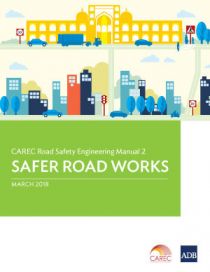
Pagination
- Page 1
- Next page
